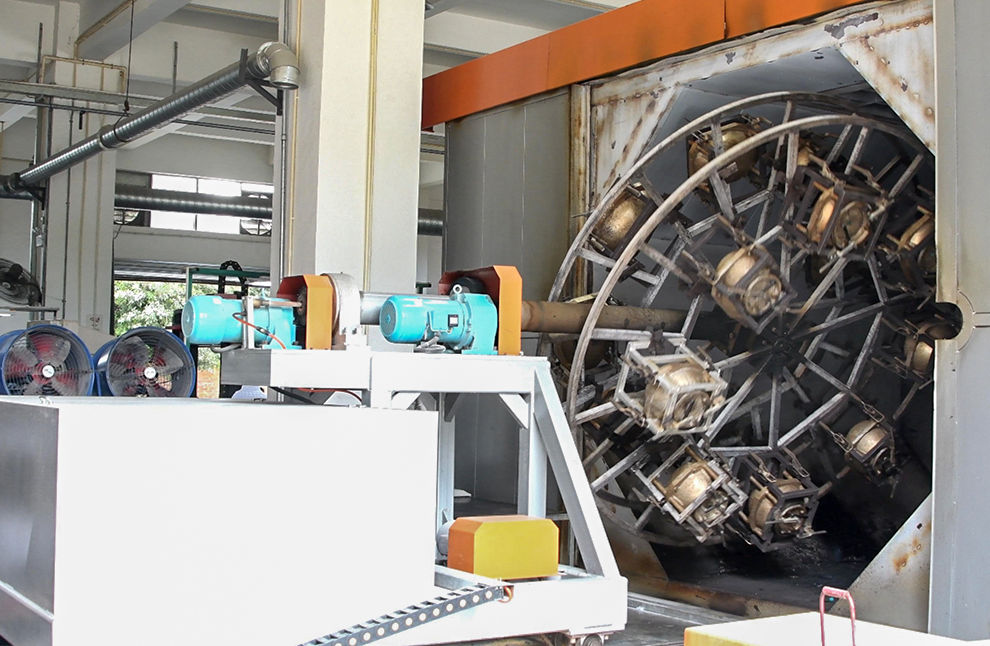How to Remove the Bubbles and Pinholes in the Production of Rotational Molding?
 Aug 13,2023
Aug 13,2023

How to Remove the Bubbles and Pinholes in the Production of Rotational Molding
The presences of bubbles and pin-holes are common problem in the rotational molding process can often lead to poor quality in rotomolded parts. It not only affects the appearance of the rotomolded products, but also affects the strength and function. Below are some guides to improve and remove the bubbles and pinholes according to our experience.
Improve the rotational molding process
In production, the air in the raw material powder should be discharged out of the molten raw material as much as possible. First of all, the heating temperature can be appropriately increased to reduce the viscosity of the molten material, so that the bubbles can diffuse more thoroughly. Secondly, the processing time can be lengthened appropriately to give more time for the air in the molten raw material to vent.

Monitor the rotational molding mold pressure
The mold must have enough ventilation holes, and the diameter of the ventilation holes should not be too small in order to prevent the ventilation holes from being blocked by materials. In this way, it can maintain good ventilation and pressure balance inside and outside the mold, thus reduce the resistance of air venting from the molten material in the mold cavity.
Chose the right resin
In terms of raw materials, choose the resins with suitable melt flow rate and density. Normally, resins with a melt flow rate of 3~10g/10min are the best choice. It is a must to keep the raw materials dry. The resin pellets should be various according to the shape of the rotomolded product. Generally speaking, rotomolded plastic products with simple shapes can use coarser resin pellets with while rotomolded plastic products with complex shapes and texture on the surface use fine resin pellets
Modify the mould
The bubbles and pinholes will occur because of the lax closure of the parting surface of the mold. The parting surface of the mold should be trimmed, and the clamping force of the mold should be adjusted to make the parting surface closely fit without leaving any gaps. The sand holes on the surface of the mold cavity and the pores in the weld should be plugged and polished, or coated with Teflon on the inner surface of the mold.
It needs to repair the mold with poor structure of the mold. For example, the corners with insufficient arcs should be enlarged to reduce the flow resistance of raw materials and reduce the possibility of raw materials bridging. Insufficient heat supply to certain parts of the mold for rotomolded products will result in bubbles and pinholes in the surface. it is necessary to increase heat supply to these areas, such as preheating, supplementary heating, etc.
At Light Venus, we are always in pursuit of producing high-quality rotomolded products to satisfy the customer's requirements in terms of functionality, longevity, aesthetics and economics. Our engineering team and production have significant experience and professional technology to be aware of the known potential issues that may happen in the rotational molding process. Any non-conformances that occur are documented and closely monitored for continual improvement purposes.We have successfully developed a wide range of rotomolded products for the OEM/ODM customers from all over the world.
 Tel: 0086-13632687993
Tel: 0086-13632687993  Email: roto@lightvenus.com
Email: roto@lightvenus.com

 Home
Home What are the Typical Inspection Criteria for Rotomolded Products?
What are the Typical Inspection Criteria for Rotomolded Products?  You May Also Like
You May Also Like



 Tel
Tel
 Email
Email
 Address
Address








